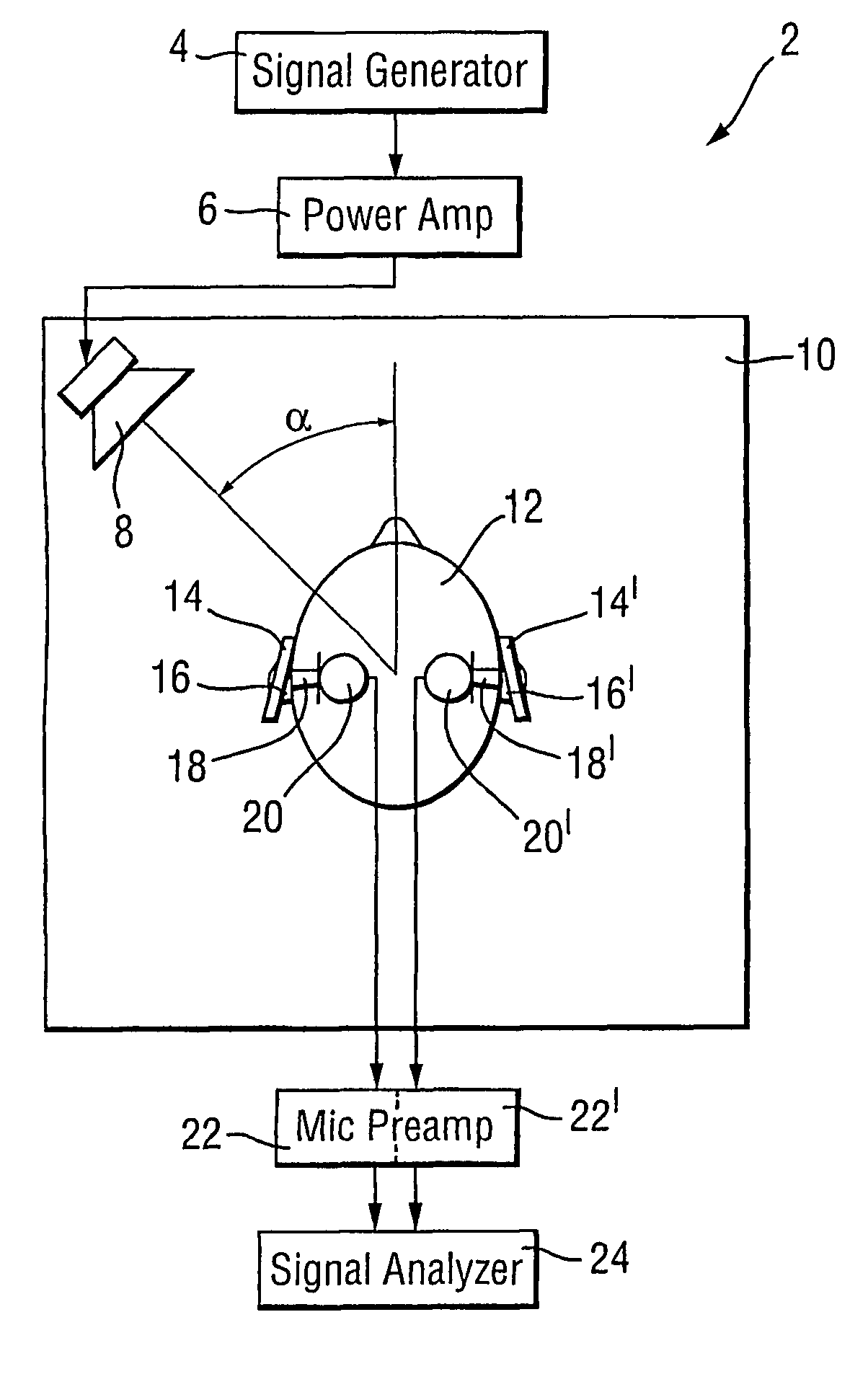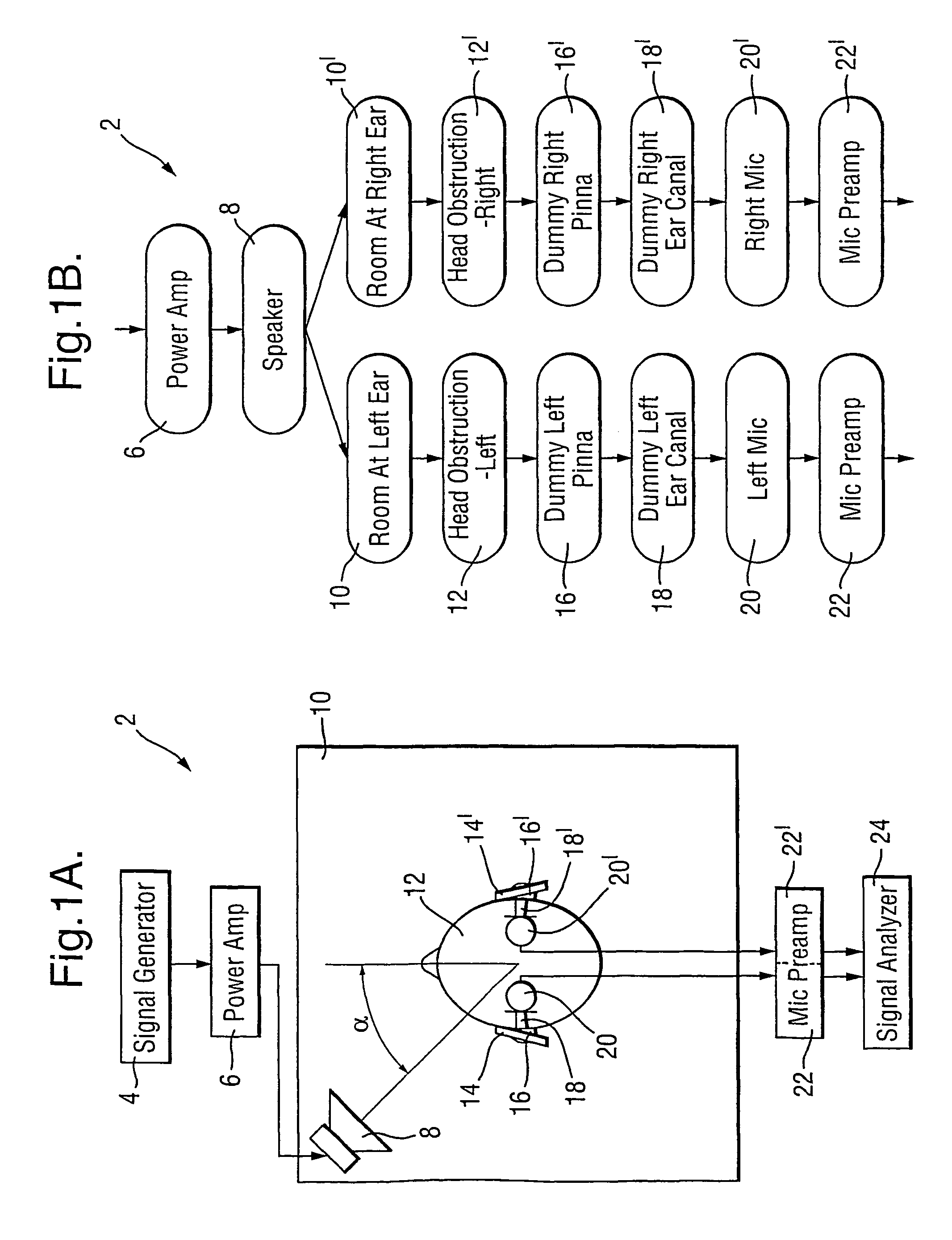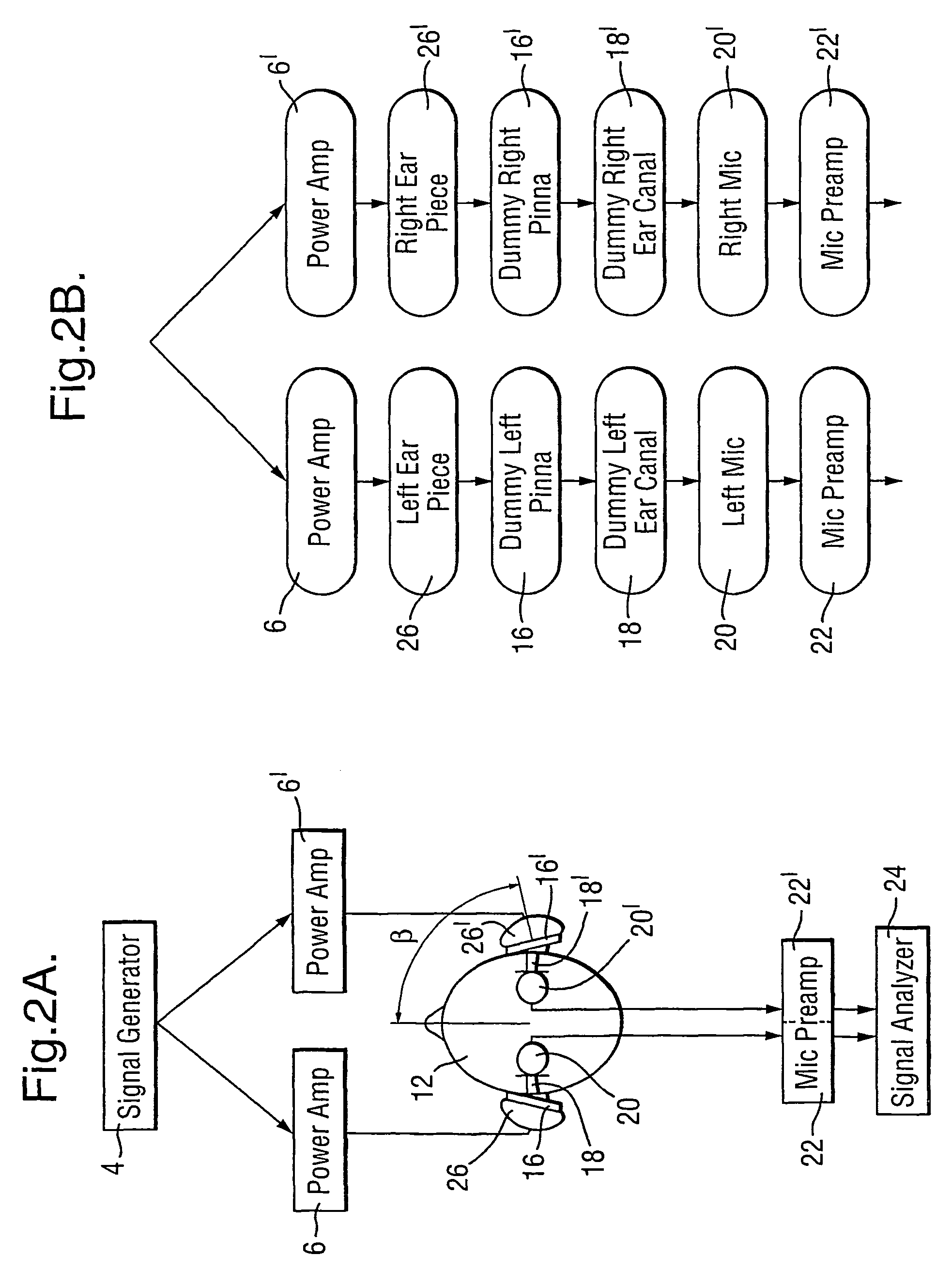Method and system for simulating a 3D sound environment
a 3d sound environment and simulation technology, applied in the field of 3d sound environment simulation, can solve the problems of front-back confusion, non-satisfactory 3d sensation, and “inside the head” sensation
- Summary
- Abstract
- Description
- Claims
- Application Information
AI Technical Summary
Benefits of technology
Problems solved by technology
Method used
Image
Examples
Embodiment Construction
[0032]FIGS. 1A and lB depict a system 2 for recording an audio signal originating in an open field, using a dummy head and a transducer located in place of each ear drum. The signal is recorded in order to obtain the HRTF parameters for one specific angle α, representing, in this case, a front left speaker. The signal generator 4 generates the test signal used for the measurement. The signal is amplified by a power amplifier 6 and reproduced by a speaker 8. The acoustic characteristics of the room 10 affect the sound, adding early reflections and reverberations to the direct sound. The influence of the room is different in each location, hence, the sound arriving at the left ear of head 12 is different from the sound arriving at the right one. The head 12 affects the sound, reflecting it into one ear 14 and obstructing it from the other ear 14′. The sound passes through the pinnas 16, 16′ and ear canals 18, 18′ of head 12 before it is recorded by microphones 20, 20′. The output sign...
PUM
 Login to View More
Login to View More Abstract
Description
Claims
Application Information
 Login to View More
Login to View More - R&D
- Intellectual Property
- Life Sciences
- Materials
- Tech Scout
- Unparalleled Data Quality
- Higher Quality Content
- 60% Fewer Hallucinations
Browse by: Latest US Patents, China's latest patents, Technical Efficacy Thesaurus, Application Domain, Technology Topic, Popular Technical Reports.
© 2025 PatSnap. All rights reserved.Legal|Privacy policy|Modern Slavery Act Transparency Statement|Sitemap|About US| Contact US: help@patsnap.com



